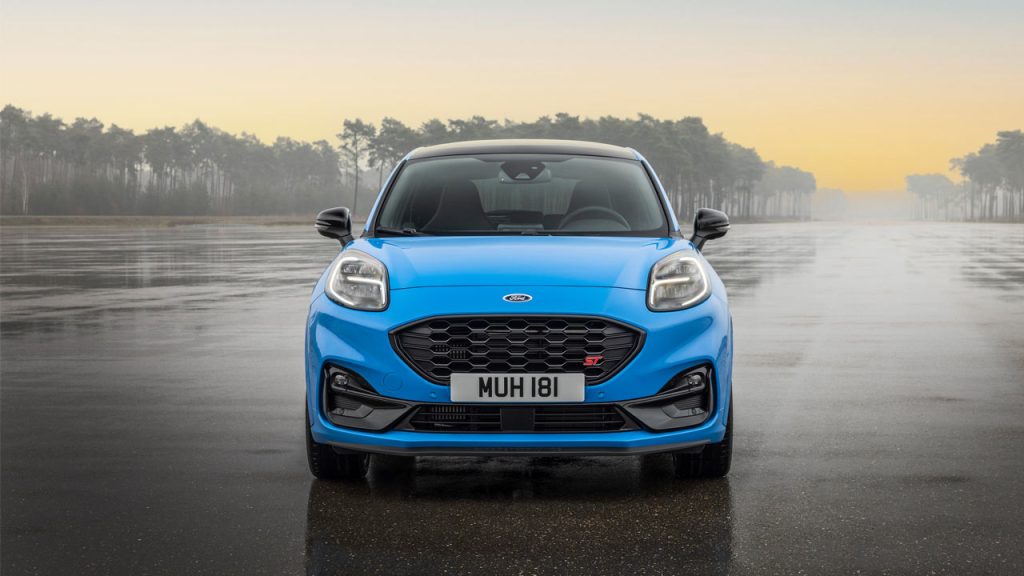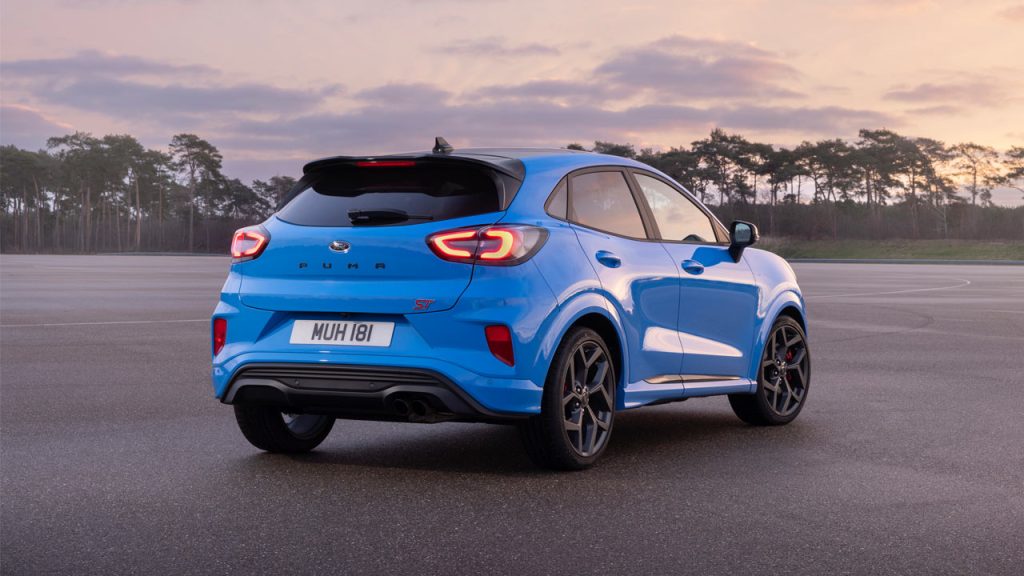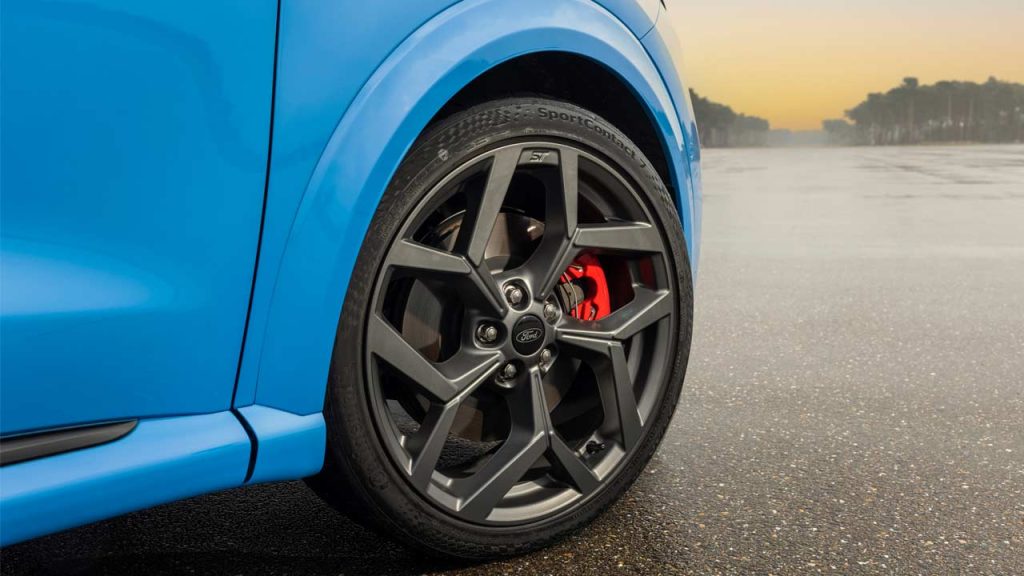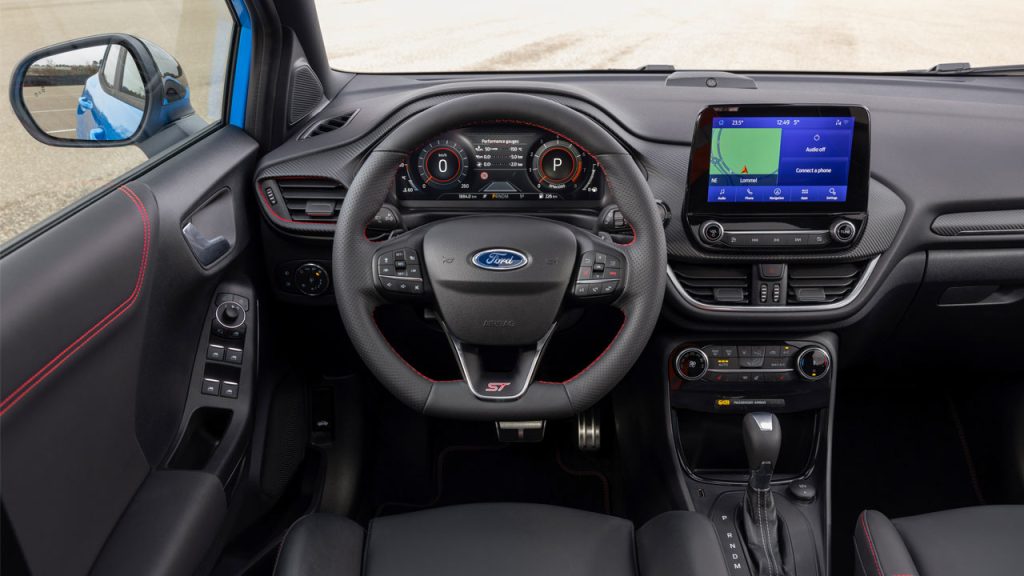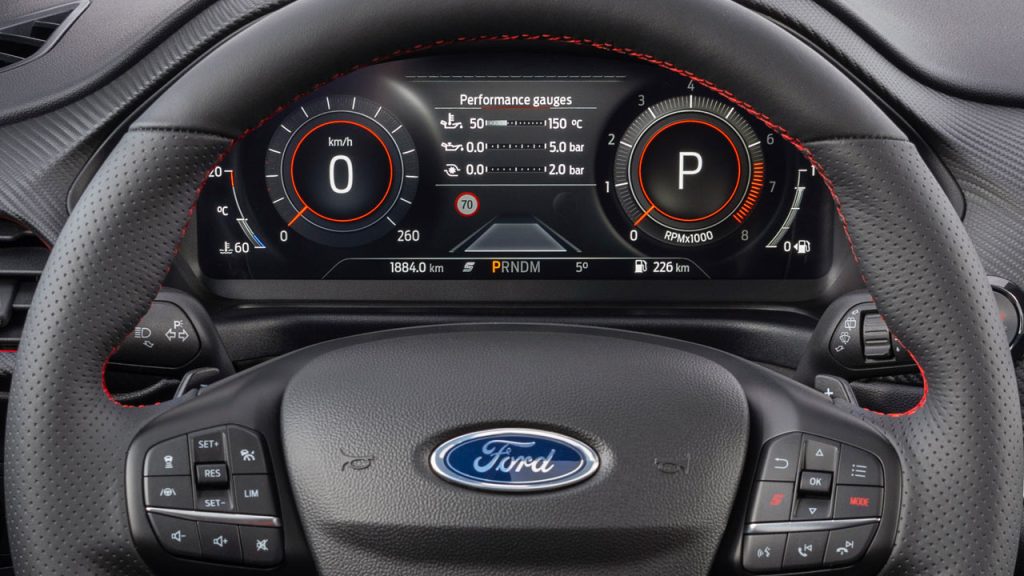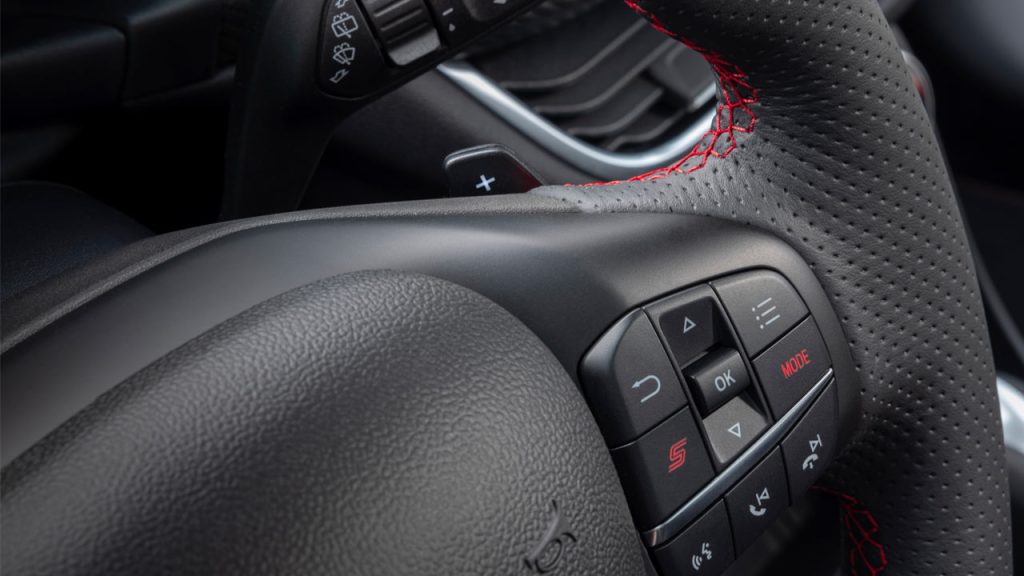As you know, Ford sells a hot version of Puma called Puma ST—powered by a 1.5L 3-cylinder turbo petrol engine that pumps out respectable figures of 147 kW (200 metric hp) and 320 Nm (236 lb-ft). Targeted at true driving enthusiasts, the engine is coupled with a 6-speed manual gearbox. But for reasons beyond our complete understanding, Ford has decided to also offer a ‘Powershift’ version of the Puma ST, expected to go on sale in Europe in the coming days.
So, what are we shifting here other than the power? Well, visually, the Puma ST Powershift looks nothing different compared with the regular Puma ST. It has got the same, sporty looks with dark elements; even the wheel design is the same, of course. And obviously, the chassis tuning is also gonna be the same as that of the Puma ST; the rear suspension twist-beam is rated at 2,000 Nm/deg torsional stiffness—an increase of more than 50% compared with the standard Puma. The 325 mm front discs are 17% larger than those of the standard Puma. What’s new is the Azure Blue paint—which is gonna be ST-exclusive.
A 11.4:1 steering ratio is also gonna be the same, which is said to be almost 25% faster than the standard Puma. The steering system uses a combination of ST-specific front knuckles, steering arm and steering rack gearing, for better cornering performance.
But we didn’t talk about the actual difference, did we? Well, the Puma ST Powershift is powered by a 1.0-litre 3-cylinder turbo petrol engine coupled with a 48-volt mild-hybrid system and a 7-speed DCT. The output figures here are gonna be 125 kW (170 metric hp) at 5,750 rpm and 248 Nm (183 lb-ft) of peak torque at 3,000 rpm. But you get a steady torque of 200 Nm (147 lb-ft) from 2,000 to 5,500 rpm.
The Powershift model is claimed to sprint from 0-100 km/h (62 mph) in 7.4 seconds. Ford claims a fuel efficiency of 6.3 l/100 km and 144 g/km CO2 emissions compared to 6.6-6.8 l/100 km and 149-155 g/km CO2 emissions of the higher-powered model.

Leave a Reply
Note: Comments that are unrelated to the post above get automatically filtered into the trash bin.


